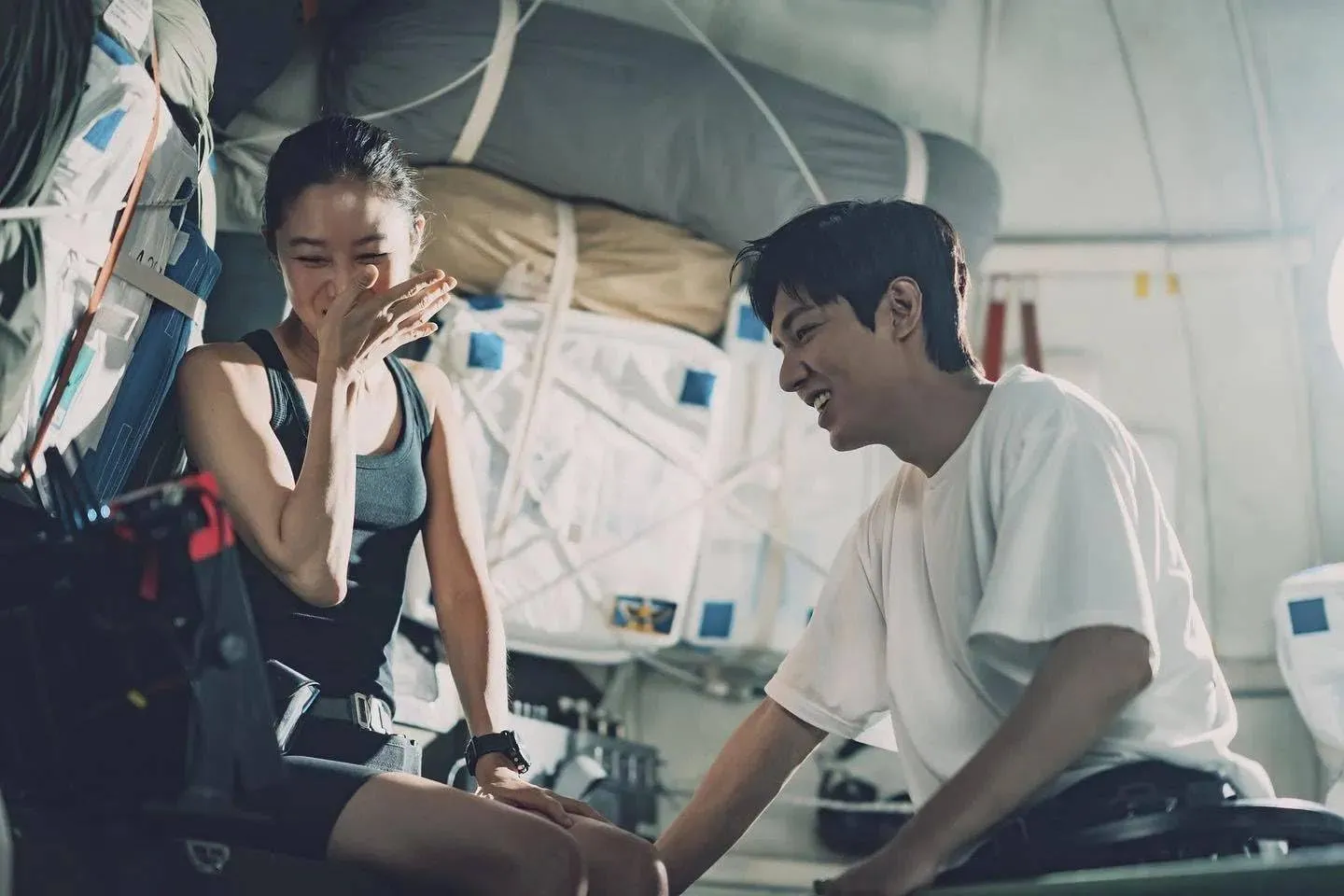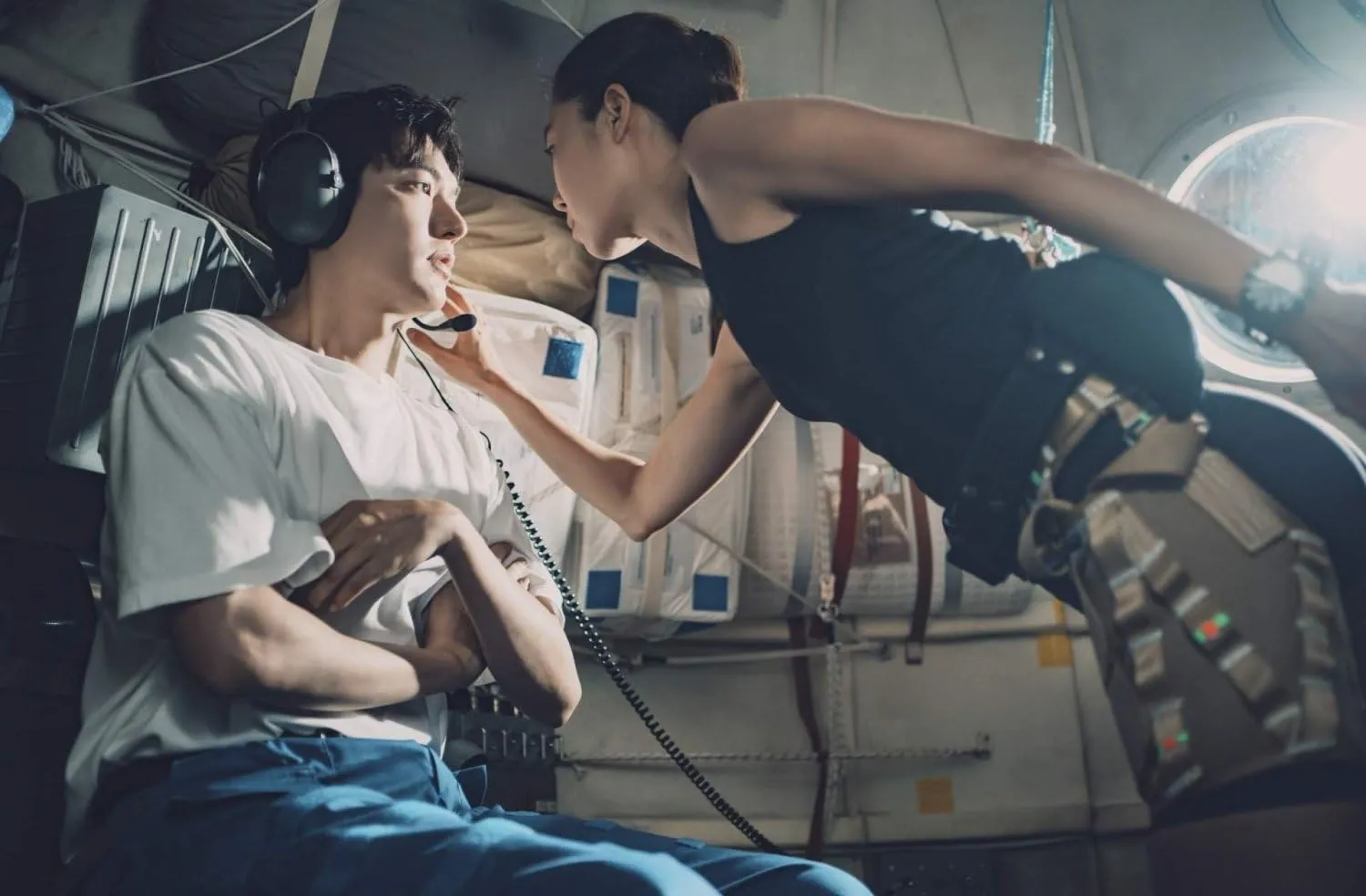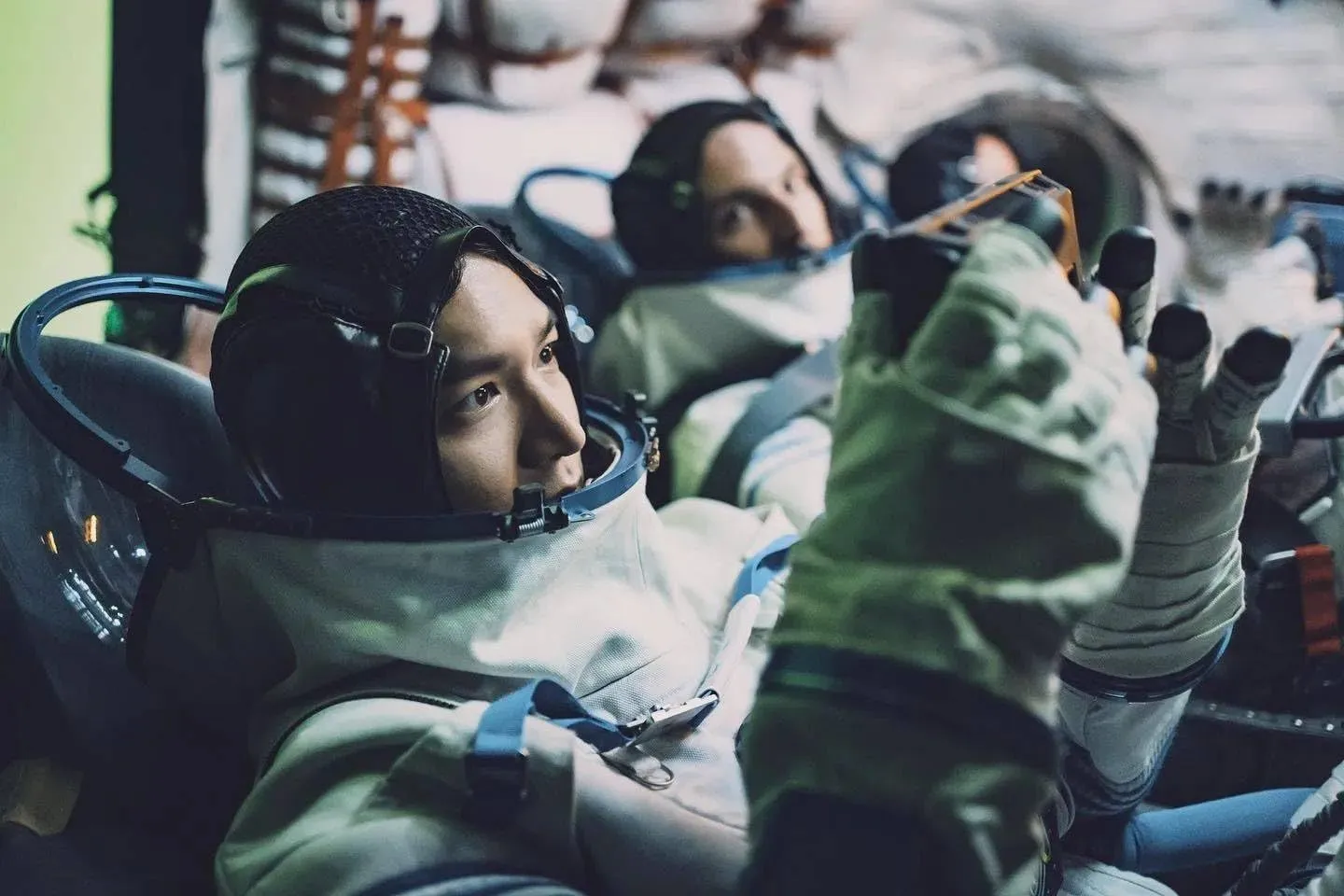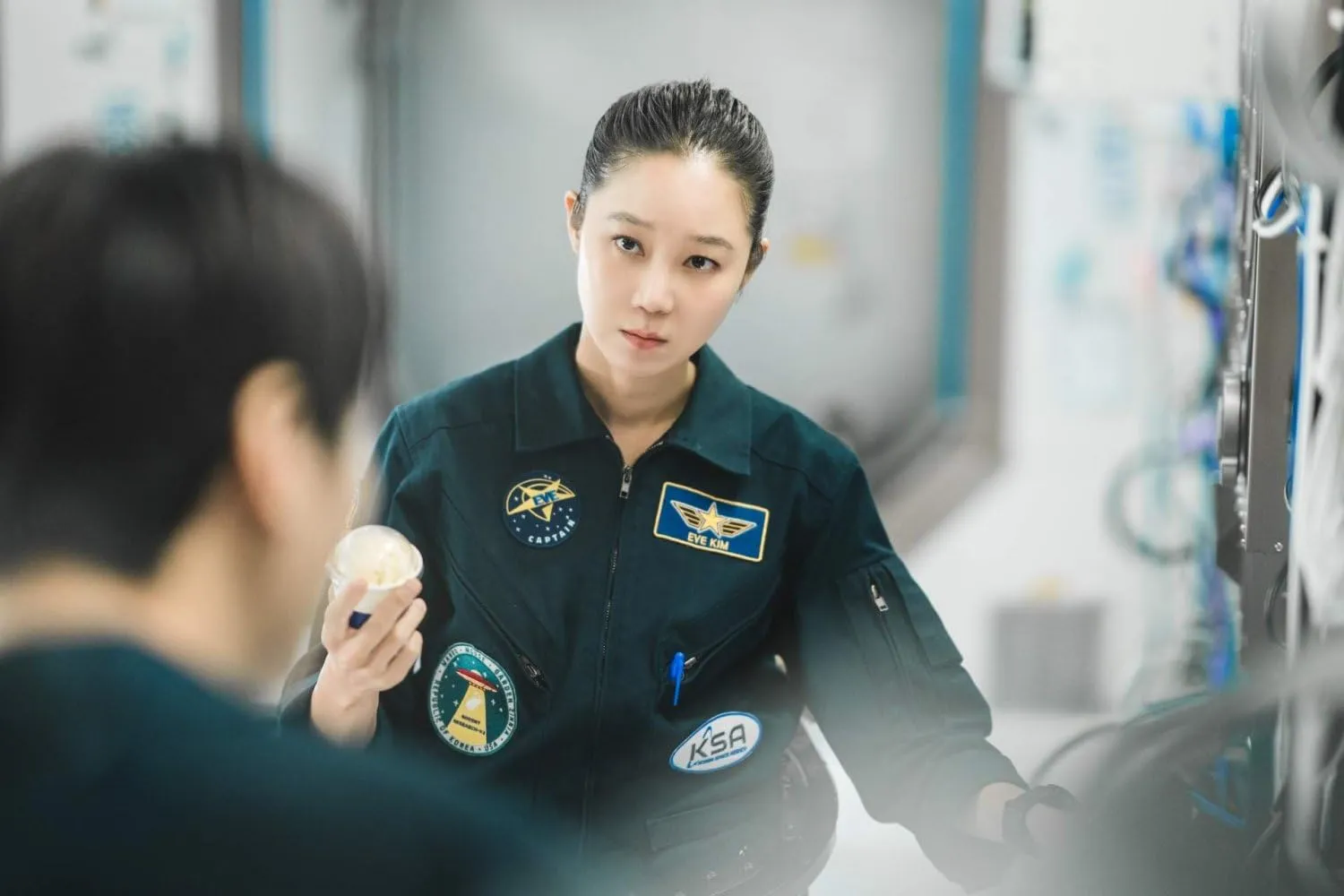” When the Stars Gossip ” presents a unique narrative that blends a romantic comedy with a sci-fi backdrop. The series follows Gong Ryong, an OB-GYN who gets involved in a task that combines his personal redemption with his scientific ambition on a space station in 2025. This unusual setting heightens the stakes and feelings and enables a compelling exploration of relationships.
Space is profoundly important as a backdrop. As the characters fight to balance ambition and love, it is a metaphor for loneliness and connection. Reflecting a generational shift toward more emotional storytelling, this cosmic setting is relevant to modern social fears.
The series is visually stunning, with cinematography that catches both space’s grandeur and personal space’s intimacy. The editing and sound design improve the narrative’s rhythm, which honors individual and group experiences. Ultimately, “When the Stars Gossip” follows conventional rules while quietly breaking them, making it a rich cultural artifact that merits exploration.
Navigating Love and Ambition in When the Stars Gossip
The most interesting part of “When the Stars Gossip” is the characters led by Gong Ryong, the charming Lee Min-ho plays. When Ryong’s wealthy future in-laws put him on a space mission, he represents the tension between personal ambition and family duty. His character is complex, marked by a sad past story that gives his reasons more nuance.
Gong Hyo-jin’s portrayal of Commander Eve Kim is an antidote to Ryong’s more relaxed personality. She navigates leadership challenges while dealing with her weaknesses as a perfectionist and a first-time mission captain. Choi Go-eun, Ryong’s fiancée and the CEO of MZ Electronics, who is not just a pawn in this narrative but a driving force in the story’s emotional stakes, further complicates their dynamic.
Supporting characters like the mysterious astronaut Kang Kang-su add more layers of conflict. Kang-su’s presence on the space station and complicated history with Go-eun form a love triangle about both wants and regrets from the past. This dynamic interaction between characters is reminiscent of the complex relationships that are frequently explored in independent films, where character motivations are complex and conflicts are rooted in personal histories rather than story devices.
The launch scene, a visually stunning moment setting the series’ tone, marked the narrative trajectory. The emotional stakes are elevated as the characters adjust to their new world in zero gravity. Each character’s backstory is intricately woven into the larger narrative as romantic entanglements develop against the backdrop of scientific exploration.
In the high-stress environment of space, the creators expertly balance humor and drama, allowing for lighthearted moments. Reflecting a generation’s struggle to find a connection in a world that is becoming increasingly isolated, this blend of personal and cosmic challenges speaks to modern social fears.
Ultimately, “When the Stars Gossip” reinvents conventional storytelling by setting its characters in an unusual setting, allowing for novel explorations of love and ambition. For those who value the complexities of the human experience, the series embraces both mainstream conventions and independent sensibilities, making it a compelling watch.
Themes Explored in When the Stars Gossip
Set against a space journey that heightens the stakes of human connection, “When the Stars Gossip” delves into the complex themes of love and sacrifice. Both the characters’ personal histories and societal standards play a role in the romantic relationships in the series.
A moving reflection on how ambition and family duties can make love complicated is Gong Ryong’s rocky relationship with Choi Go-eun. Viewers see the profound effects of personal choices on character development as Ryong navigates his feelings amidst the pressure of external demands. This exploration is reminiscent of the emotional complexities of old French New Wave films, where love frequently grows despite social barriers.
The exploration of scientific ambition and ethics in the series is equally compelling. The moral problems with having children in zero-gravity are a microcosm of larger social worries about legacy, family, and how far people will go to achieve their objectives. The narrative prompts viewers to consider the intersection of personal and scientific ambition as the characters deal with the effects of their scientific studies. This theme hits home today when new technologies often make old ideas of family and identity hard to understand.
“When the Stars Gossip” blends these themes in a way that is both entertaining and reflective of how culture is changing right now. It encourages conversations about love, sacrifice, and the moral complexities of our increasingly scientific world. The series strikes a good balance between being easy for popular audiences to understand and the kind of complex storytelling frequently praised in independent films, making it a timely exploration of our time.
Visuals and Cinematography in When the Stars Gossip
To create a visually stunning narrative that enhances its storytelling, “When the Stars Gossip” uses cutting-edge CGI. The special effects aren’t just for show; they serve to transport the audience to a space station and help them understand how hard the characters’ trips are for them.
One great scene is during the launch process when the camera shows the crew’s reactions to the awe of liftoff next to their reactions. This blend of big visuals and character stakes is reminiscent of modern sci-fi movies that put story-driven plots ahead of sheer spectacle.
The series does a great job of using movie-like techniques to pull viewers into its world. To convey a sense of immediacy and intimacy, the camera settings and framing are carefully chosen. For example, close-up shots during moments of personal conflict heighten the emotional tension, allowing us to feel the characters’ struggles with the vastness of space.
This style differs from the usual K-drama style, which likes wide shots and over-the-top acting. Instead, “When the Stars Gossip” uses a more fluid and dynamic style of cinematography, similar to the creative ways that directors like Noah Baumbach use camera movement to show how characters change over time.
The contrast between the claustrophobic interiors of the spacecraft and the vast space vistas successfully heightens the stakes of the narrative, reflecting the characters’ internal conflicts. This visual approach serves the story and challenges the genre’s conventions, placing “When the Stars Gossip” in a space that feels both new and current. The series shows how visual storytelling can elevate a narrative by letting viewers explore the complicated themes of love and ambition in space.
Performance Analysis in When the Stars Gossip
Lee Min-ho gives a remarkable performance as Gong Ryong in “When the Stars Gossip,” giving the character a wonderful blend of charm and vulnerability. His performance shows the complexity of a man torn between personal ambition and his family’s expectations.
Lee’s performance is so compelling because he navigates Ryong’s inner battles, switching between funny relief and sincere sincerity. Audiences respond to this duality, which draws us into his journey of self-discovery in the chaos of space. It’s reminiscent of the emotional depth found in the works of modern film directors like Greta Gerwig, who expertly juggles drama and humor.
Gong Hyo-jin beautifully complements Lee’s performance as Commander Eve Kim, showing how the series’ dynamic character arc develops. Eve’s character starts as a strict perfectionist, but as she deals with both her work duties and her personal feelings, more layers of her personality become clear. As Eve navigates her growing connection with Ryong, Hyo-jin beautifully captures her transformation from a strong presence to a more vulnerable character. Their chemistry is electric, and moments of tension and tenderness elevate the narrative and emphasize the challenges of love in high-stakes circumstances.
The supporting cast is also essential to enhancing the narrative setting. Oh Se, who plays the troubled ex-boyfriend Kang Kang-su, gives the story more depth. He is both a contrast to Ryong and a source of tension for her. Choi Go-eun (Han Ji-eun) and Santiago (Alex Hafner) are two characters whose acts add depth to the ensemble, creating a web of relationships that enhances the overall storytelling.
The chemistry between Lee and Hyo-jin is especially noteworthy; it moves the narrative along, making their emotional exchanges seem real and compelling. Their interactions, which are marked by a combination of humor and sincere moments, support the series’ themes of love and sacrifice, making “When the Stars Gossip” a powerful exploration of human connection in the vastness of space. This series elevates itself with strong performances and complex character dynamics, reflecting current cultural trends while giving well-known styles a new spin.
Humor and Tone in When the Stars Gossip
The comedy and drama in “When the Stars Gossip” are expertly balanced, creating an interesting and relatable narrative. The storytelling is made richer by the inclusion of humor into important subjects like love, ambition, and existential doubt. For example, the characters’ interactions in the crowded space station often lead to funny moments.
As part of a particularly funny scene, Ryong tries to cook a meal in zero gravity, which turns into a crazy but cute show that shows how awkward his character is. These humorous moments serve to humanize the characters and make their problems more relatable, in addition to providing comic relief.
The series’ overall tone keeps viewers emotionally involved, allowing them to switch between reflection and laughter. This shifting of tones is reminiscent of Noah Baumbach’s works, who frequently uses sharp wit to tell stories that deal with deeper problems.
“When the Stars Gossip” encourages the audience to connect with its characters on various levels by contrasting funny elements with vulnerable moments. A good balance between high stakes and fun on the trip creates a sense of connection that lasts long after the movie ends. Inviting viewers to laugh and think at the same time, the series expertly navigates the complexities of human experience.
Conclusion and Final Thoughts on When the Stars Gossip
“When the Stars Gossip” stands out for its unique blend of humor and emotional depth, set against an interesting sci-fi backdrop. With beautiful visuals and strong performances that elevate its narrative, the series deftly navigates complicated themes of love, sacrifice, and ambition. As a result, its unique structure and character dynamics represent modern worries, making it an important piece of culture.
When we think about the next episodes, we can feel how excited we are to see how the characters continue to change as they face the challenges of their space journey.
This series will continue to be a compelling watch in the ever-changing world of modern cinema thanks to the possibility for further exploration of moral quandaries and personal relationships that will keep audiences interested.
The Review
When the Stars Gossip
In a captivating sci-fi setting, "When the Stars Gossip" is a welcome blend of humor and drama that expertly explores themes of love and ambition. Strong performances, creative visuals, and rich character dynamics create an interesting narrative that connects to modern social problems. It is a unique series that encourages laughter and reflection due to its ability to balance seriousness and humor.
PROS
- Strong performances from the lead and supporting cast.
- Engaging blend of humor and drama.
- Innovative visual effects and cinematography.
- Relevant themes reflecting contemporary societal issues.
- Dynamic character arcs that evolve throughout the series.
CONS
- Some plot points may feel predictable.
- Pacing issues in certain episodes.
- The sci-fi backdrop may not appeal to all viewers.



















































